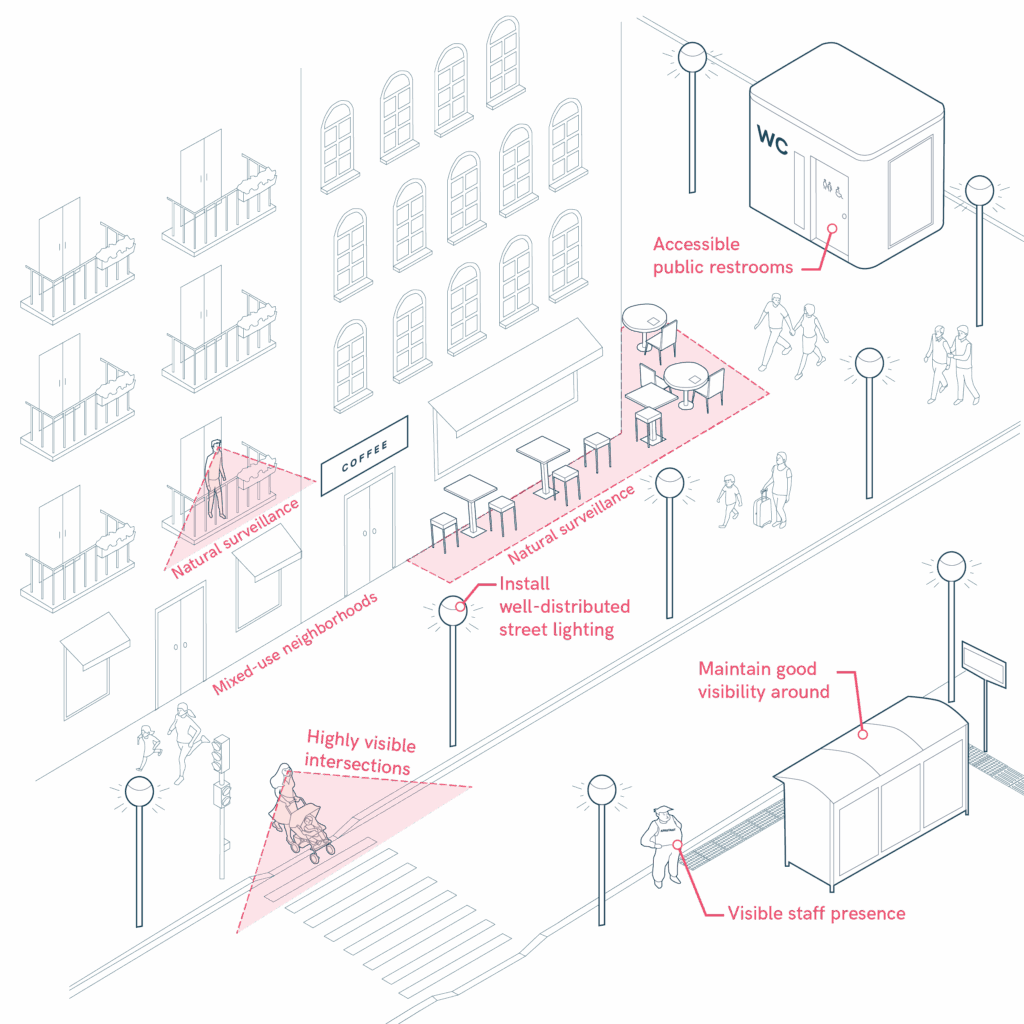Safe and Comfortable Streets for All
Designing safe, welcoming streets is essential to promote inclusive urban life — especially from a gender-sensitive perspective. Safety is not only about physical infrastructure but also about how public space is used and experienced. Streets feel safer when they are active, well-lit, and populated, with passive surveillance provided by residents, local businesses, and everyday activity. Urban design must prioritize visibility, comfort, and accessibility for all, including women, children, caregivers, and people with reduced mobility.

- Prioritize street layouts with buildings directly facing the sidewalk, combining residential units with active ground-floor uses like shops or cafés to ensure constant street activity.
- Encourage mixed-use neighborhoods that support natural surveillance by ensuring people are present at different hours of the day.
- Install well-distributed street lighting, avoiding dark corners or unevenly lit areas, especially around crossings and public amenities.
- Ensure clear sightlines by avoiding visual obstructions such as overgrown vegetation, parked vehicles, or poorly placed urban furniture.
- Design highly visible intersections with wide pedestrian crossings, clear signage, and unobstructed views for both pedestrians and drivers — especially important for caregivers with strollers or small children.
- Integrate clean, accessible public restrooms along key pedestrian routes to increase comfort and usability of public space.
- Incorporate mobility hubs with visible staff presence not only inside but also outside the facilities, reinforcing a sense of security in their surroundings.
- Maintain good visibility around bus stops, benches, and gathering areas to discourage isolation and increase passive oversight by nearby users and businesses.
